A new report from the Council on Geostrategy calls for the Royal Navy to prioritise the development of longer-range anti-ship weapons and advanced missile defence systems to maintain its ability to project power and deter adversaries.
The report, authored by Dr Emma Salisbury, stresses that without these upgrades, the Royal Navy risks being left vulnerable in an increasingly contested global environment.
The report highlights the urgent need to extend the range of current anti-ship missiles, stating:
“The development of longer-range and more survivable anti-ship weapons is crucial in ensuring that the Royal Navy can project power and deter potential adversaries. Current anti-ship missiles must be enhanced to extend their range, allowing for standoff engagement against enemy vessels while minimising exposure to counter-fire.”
The report also highlights the importance of ensuring that these weapons are designed with survivability in mind. “Ensuring these weapons are designed with survivability in mind—whether through stealth features or advanced guidance systems—will significantly increase their effectiveness in contested environments.”
In addition to offensive capabilities, the report warns that traditional defence systems are increasingly inadequate against the rise of hypersonic and ballistic missile threats.
“The Royal Navy must invest in advanced missile defence technologies capable of countering these high-speed threats. Systems that can detect, track, and intercept missiles at various altitudes and speeds are essential to protecting fleet assets.”
The report recommends a layered defensive architecture, combining long-range interceptors with close-in weapon systems (CIWS), such as Phalanx, to create a comprehensive shield over naval operations. The integration of Laser Directed Energy Weapons (LDEW) is also proposed as a cost-effective and versatile solution for addressing a range of threats, including drones and missiles.
For more detailed analysis and recommendations, the full report can be accessed here.


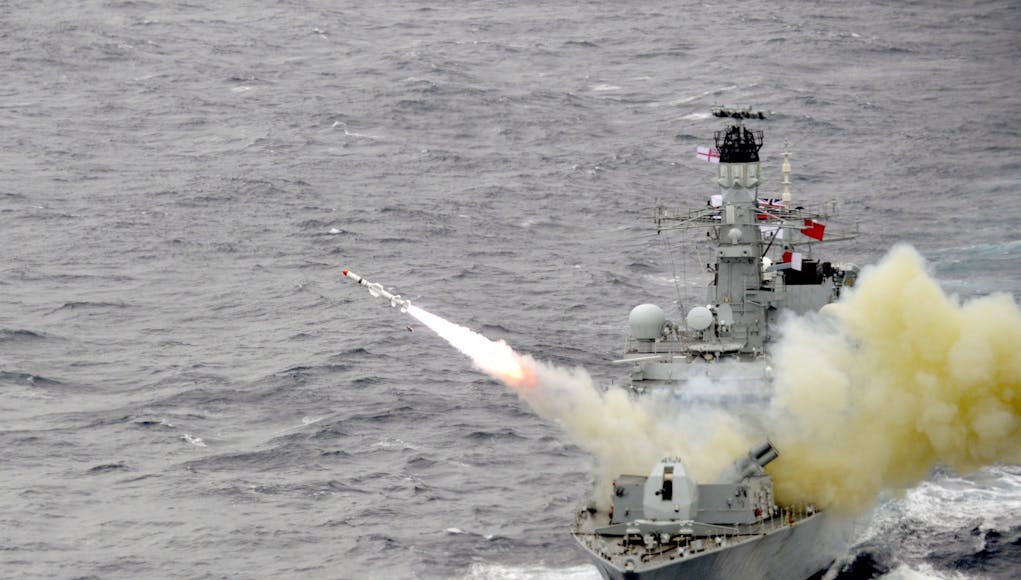


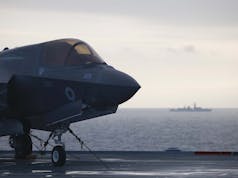
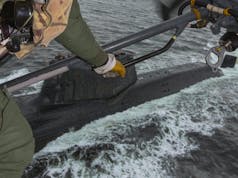

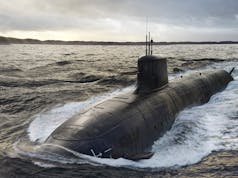


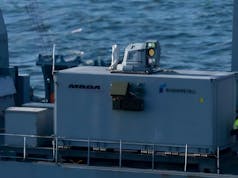


That has been evident for over two decades. Probably indicates a fundamental understanding that navies are strategic facilitators.
Take the Merlin helicopter for instance. In Gulf War 1 USN helicopters without missiles but with radar queued RN helicopters with missiles but no radar on to targets. The USN then goes about to buy missiles for its helicopters. The RN then brings into service a new helicopter with a good radar and then doesn’t buy missiles. It was probably cost that caused that but I don’t think anycase was made for missiles. The Italian navy did outfit their Merlins with Marte. But the reach of (at best speed) 30kt frigate was greatly diminished for want of a very small sum of outfitting a 150kt (at cruising speed) helicopter with an off the shelf missile.
Type 45 should have been built with an additional VLS for T-LAM. Again GW1 showed the way naval warfare was going. To use that cliche steal and air are cheap. The extra cost in terms of the overall project again very little. The cost of filling 48 cells with TLAM again not really much in the great scheme. Certainly cheaper than a squadron of jets to carry that many missiles. Certainly cheaper than spooling up one jet to carry a handful one mission. Well perhaps not always but the case for a good portion of time could be made. A T45 in the Med and a T45 in the upper Indian Ocean and Gulf would be in reach of most of the most places the UK would want to hint kinetically.
The only upside I can see is that the MoD is going to actually own the new recce birds.
Yes “Steel is cheap and air is free”, which is why the T45 was built with the spare space for 2 MK41 VLS right next to the Sylver ones. Which is now going to be filled with an additional 24 Sea Ceptor missiles. The T45 is a dedicated AAW Destroyer and not tasked for Long Range Land Attack, it will have 8 NSM fitted.
Thank you for thoughts.
Obviously I am talking about what the RN should have done not what they did.
The RN has few platforms it cannot afford specialist ones. This is something the RN identified back in the 1950’s.
Well that’s nice to know, we will just scrap our ASW Frigates, AAW Destroyers, Aircraft carriers, SSNs and SSBNs.
Strangely the mighty USN is going back to specialist ships such as ASW. And the specialist AAW T45 did quite nicely in the Gulf.
The USN destroyer force is now, and will be for decades to come, primarily based around the DDG-51 type destroyer – ships that field a significant general purpose capability.
With the RN escort force reduced to the pitiful state we see now a situation where a specialist AAW ship can be faced with a sudden and critical ASW tasking – and vica versa – can not only be easily foreseen but looks almost inevitable. Therefore, our Type 26 class should in principle I think look a lot more like their (more capable) RAN and RCN cousins than they do alas.
The problem here is the additional cost of such a proposal of course – difficult to solve but one step towards making a upgraded T26 class more affordable would have been to strangle the T31 class at birth, as these ships don’t appear to offer much towards the fleets ASW or AAW capabilities, and ecomise on all avoidable waste – such as keeping two aircraft carriers in commission when we barely have sufficient aircraft to equipped one!
Even then there are no easy solutions without a meaningful increase in the defence budget.
The RN decided that specialist ships (one for FD, one for AA, one for ASW) was a bad idea back in the late in 1950’s as the right mix of ships could never be guaranteed to be available at the point.
Technology allowed all those roles to be placed in one hull hence T12(I) These were still the days when frigates were supposed to escort merchant ships and destroyers escorted HVU’s. So it should be noted that County class carried Type 170 search and Type 184 targeting sonar sets. When T42 came along it carried Type 2050 / 2016 ASW and Type 162 bottom profiling sonars.
Type 45 should have followed suit hence the large hangar. But budget constraints saw a bodged job and ASW capability hobbled. If T45 was supposedly a specialist AAW ship from the start I don’t understand why it would use up that deck space and volume with a hangar for helicopter it didn’t. Such a ship would never ever go anywhere on its own always only in company with something else important enough to warrant an ASW screen. No hangar means more space for weapons and sensors. This is the reverse of the problem the USN had with Flight I AB’s. The UK would have liked its fleet helicopter to be Merlin couldn’t afford so if T45 was intended to be purely AAW why the hanger? It had a hangar because just like its Horizon cousins it was intended to have a decent ASW sonar and a helicopter to prosecute contacts.
Not sure what evidence there is to support your view of RN thinking. In the early 50s the RN built four one trick ponies in the Salisbury class. They were replaced by the Leanders which would fit your thinking of general purpose. Unfortunately they were master of none. So in the midlife refit they became more specialised. With Ikara for anti submarine or Exocet for anti ship. Also the mortars were ripped out to fit Lynx capable flight deck. So the only ASW on exocet was torpedoes and the hull sonar. Drawback their was Leanders were very noisy hulls. The Lynx did offer a much more credible nuclear option however.
Really put some work on the Leanders , towards the end a few were fitted with Sea wolf.
Boy did they and then some. The bulk of them were mid lifed at the frigate sheds in Guz. A few at Pompey and few Chatham. It was Impressive to see them in the sheds at the various stages. In early eighties a handful were fitted with towed array again.
Hangars carry a helo specifically Lynx and now Wildcat
Helos do MATCH/VECTAC, ASuW , OHT, NGS spotting, Boarding ops, Surface Search, EW, SAR.
You dont need a sonar to attack subs. You need a Dipper or an ASW ship or ASW asset to provide VECTAC data onto the target. T45 has an air weapons mag.
If it identified in 1950’s it failed its policy.
T26 , T45 , T31 are all three a failure as multi propose ships.
You can’t have dedicated ships when you only have a few . We have no land attack at all ffs
Bar the main gun the RN surface fleet have never had a land attack capability.
In later years there was a reason for that.
SSN.
With SSNs dedicated to land attack they were sacrosanct from Govt budget cuts.
Now with AUKUS the SSN is tied into a multi nation project that itself is sacrosanct.
The need to only have land attack from SSNs (to save them from Govt budget cuts) has gone so land attack can go on FF/DD without threatening the need for the SSN force.
Tomahawk on SSN was a genius move by the RN ensuring that the UK stayed in the SSN game
Tomahawk on subs is not that good unless you’re picking on a nation with poor air defence . Astute subs can’t fire a good volley of tomahawk needed to defeat a decent air defence . What subs are at sea with land attack right now ?
As I said above that was never the idea. The RAF needs friendly airbases or a shed load of tanker support to do Storm Shadow/Paveway strikes. (Look at whats needed to reach Yemen.)
The RN said hold my pint…we can do tomahawk from subs thus ensuring subs are never cut in the budget reviews.
AUKUS has changed that very clever bit of interservice politicking by the RN so land attack can go on FF/DD. The need for land attack from SSNs which is very niche isn’t going to be needed to ensure SSNs stay. AUKUS now ensures that
It didn’t matter if the capability was poor…that wasn’t the driver. The driver was being able to say you cannot get rid of SSNs if you want to do at distance land attack.
Errr….
Lynx, which was firing the missiles (Sea Skua) had the excellent Seaspray radar….it needed to as Sea Skua was a semi-active radar homing missile…
The USN Seahawk were just used as additional search assets…
Merlin is a dedicated ASW helo….but if push came to shove we could attach laser guided rockets in pods to it if we really, really needed anti surface capability as it has been trialled with it…
Sorry I forgot re Lynx. But my point re USN and Penguin still stands.
But as for you point re Merlin no sorry. That is just you asserting your belief from your internet browsing.
I suggest you have a look at this….Merlin trialled with FNH gun, rocket and gun/rocket pods….using FdZ rockets. FdZ manufacture the FF275 laser guided version…and Merlin HM/2’s Wescam is perfectly capable of laser designation…
https://www.youtube.com/watch?v=n9ZvRVrccBo&ab_channel=BritishHelicoptersHistory
Italians have Marte in Merlin
You do know how much an 8 cell strike length Mk41 costs?
+15 mil dollars.
So 48 cells before adding missiles is going to be around 100mil with installation and STW cost.
Tomahawk is around 2 mil a pop in the block V configurations of A & B (land attack and Anti Ship) So we are now up to 200 mil
How are we targeting these anti ship tomahawks? You need something to do OHT and midcourse updating via a data link.
Merlins dont carry missiles (They never have). Most helos in GW1 where Sea kings or Lynx . Lynx had their own radars and using Sea Skua destroyed a lot of targets.
Was it Del Boy that said, ” statment of the bleedin obvious”?
Although it’s not specifically Navy, FC/ASW is a new long-range anti-ship weapon that will be used by them. So is the advice to accelerate it, or is this just ticking the box of what’s already in the pipeline?
I don’t get the comment about current anti-ship missiles being enhanced, unless it means by adding to them. The current missiles are Martlet and NSM. I can’t see Martlet enhancement as critical. NSM needs to proliferate across the fleet as it stands, rather than worry about enhancement. Sea Venom and FC/ASW will, I hope, fill out the capability.
Just as an afterthought, the Tomahawks could be upgraded to become anti-ship. I think they are seen as a purely land-strike capability, and I’m not sure that should change.
Yes. Anti-ship is now the preserve of the very complex and very high speed missile. All a TLAM or cruise missile would be is a way of attriting opfor’s kinetic defence if EW hadn’t dealt with the threat.
A ship needs to carry 48/50 at least. It needs to a bombardment weapon. Imagine a hypothetical British CBG approaching an enemy coast with 100+ TLAM. It would be a different proposition.
What?
Give up now.
You are digging yourself into a hole.
In your case Wiki is not your friend…
FC/ASW in its anti-ship guise should arrive in 2034…
But….at present that appears to be the supersonic variant. Whilst fast I doubt it will have substantially more range than NSM has.
It’s very unclear if the other FC/ASW missile, the subsonic stealthy long range version that we are buying for land attack will have an anti-ship variant (i.e. like JASSM and LRASM).
I’ve said it for years, the RN with 19 escort vessels should have multi mission ships. Type 26 with 32 vls upfront and get rid of the useless mission bay for 64 strike vls. Stick a Sampson on it and u have the best destroyer in the world. ASW? No problem. AAW no proble.. Firepower? Not a bloody problem. Build 24 of them and that’s the surface fleet. 8 at sea 24/7 globally. If u want patrol vessels like the rivers then fine, but our only war ship would be the type 26 destroyer. Commanality, interchangability, training cost, parts cost. It’s that simple it would never happen.
What useless mission bay?
The one that can provide these capabilities?
And do all of that with minimal port infrastructure?
A ship can never be a top AAW and ASW combatant at the same time. The manoeuvres and positioning simply doesn’t overlap. Therefore during a single deployment a ship will only ever be doing a single role, because if it is ever realistically under threat from both a war has started and it shouldn’t be by itself anyway.
That’s the logic that navies have followed from time immemorial and it isn’t going to change in the foreseeable future.
The Australians created a multirole T26 because their main opponent, China, relies mainly on air threats as its offensive weapons and they didn’t have the political support for separate classes of new ships. They’ve had real trouble trying to shoehorn both roles in.
Why do you think the same approach would work for the RN?
Extra helicopter? try to operate 2 helicopters when one have to pass trough the other…
T26 (RN version) is a lost opportunity, it should have side by side hangars and Aster class missiles with fixed panels radars for longe range AAW interception. it would not have the the 2 radars of T45 but it would have been good multi propose vessels with great capability.
In a nutshell, the RN desperately needs to lose its “porcupine” image.